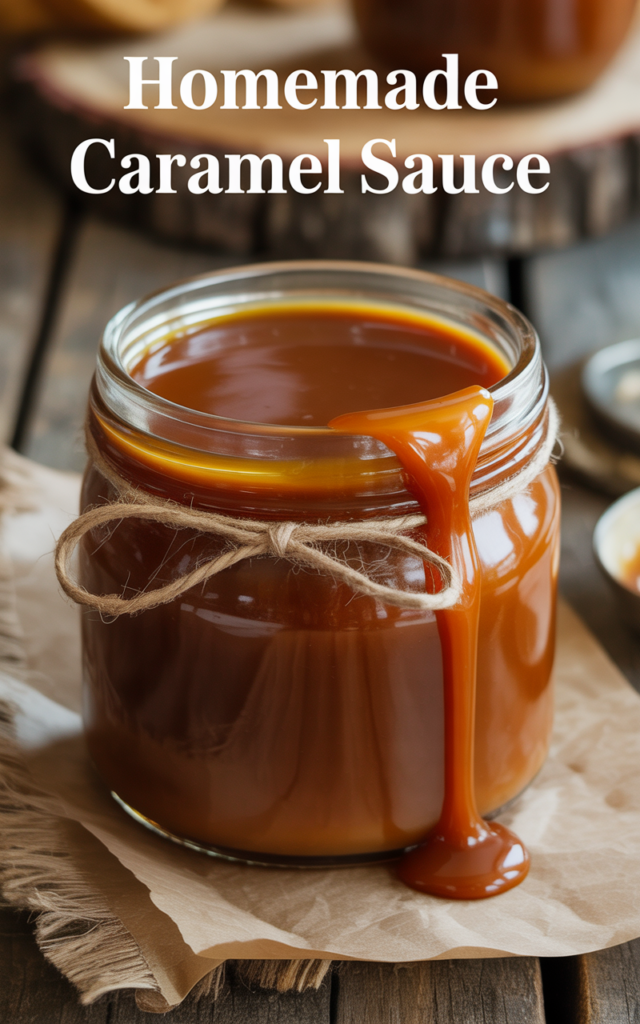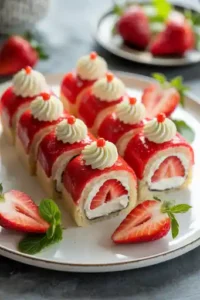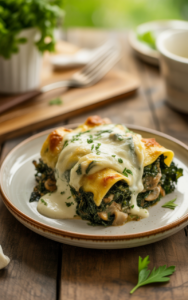Homemade Caramel Sauce: The Sweet Secret You Can Master in Your Kitchen
There’s something magical about caramel sauce. That glossy, golden-brown drizzle can turn a simple dessert into a masterpiece, elevate a morning coffee, or even add depth to savory dishes. While store-bought options are convenient, nothing compares to the rich flavor and silky texture of homemade caramel sauce.
Making caramel at home might sound intimidating—after all, we’ve all heard stories of burnt sugar and sticky disasters. But the truth is, with the right techniques, ingredients, and a little patience, anyone can master this sweet delight. In this guide, we’ll cover everything you need to know: from the science behind caramelization to step-by-step recipes, storage tips, creative uses, and troubleshooting. By the end, you’ll not only be able to make perfect caramel sauce but also impress your guests with your culinary confidence.
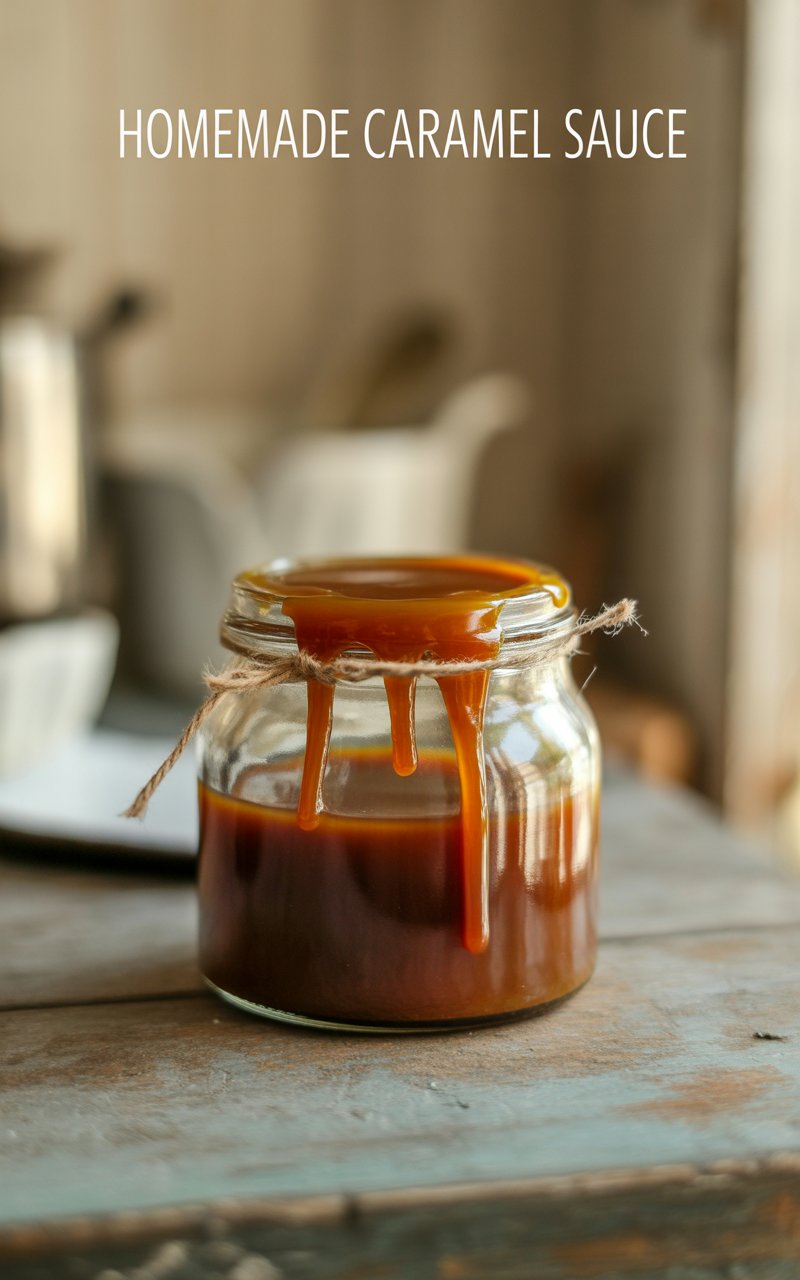
Why Make Caramel Sauce at Home?
Before diving into the how, let’s talk about the why.
- Superior Flavor – Homemade caramel has a depth and richness that mass-produced versions often lack. You control the ingredients, so the flavor is pure and customizable.
- No Artificial Additives – Store-bought caramel can contain stabilizers, preservatives, or artificial flavors. Homemade keeps it simple: sugar, butter, cream, and maybe a pinch of salt.
- Customizable Sweetness & Texture – Like it thicker for dipping apples? Or thinner to drizzle over pancakes? Making your own means you’re in charge.
- Cost-Effective – A small bottle of gourmet caramel sauce can cost as much as making several jars at home.
- Versatility – Use it in desserts, drinks, and even savory dishes (hello, caramelized onion sauces!).
The Science of Caramelization
Understanding caramelization will help you avoid common mistakes.
- Caramelization vs. Maillard Reaction: Caramelization happens when sugar is heated to around 340°F (170°C), breaking down and creating hundreds of new flavor compounds. This is different from the Maillard reaction, which involves proteins and sugars (think browned steak or toasted bread).
- Stages of Caramel:
- Light Caramel: 320–340°F (160–170°C), golden and sweet.
- Medium Caramel: 340–355°F (170–180°C), rich and nutty.
- Dark Caramel: 355–370°F (180–190°C), bittersweet and intense.
Most caramel sauces fall into the medium stage, balancing sweetness and complexity.
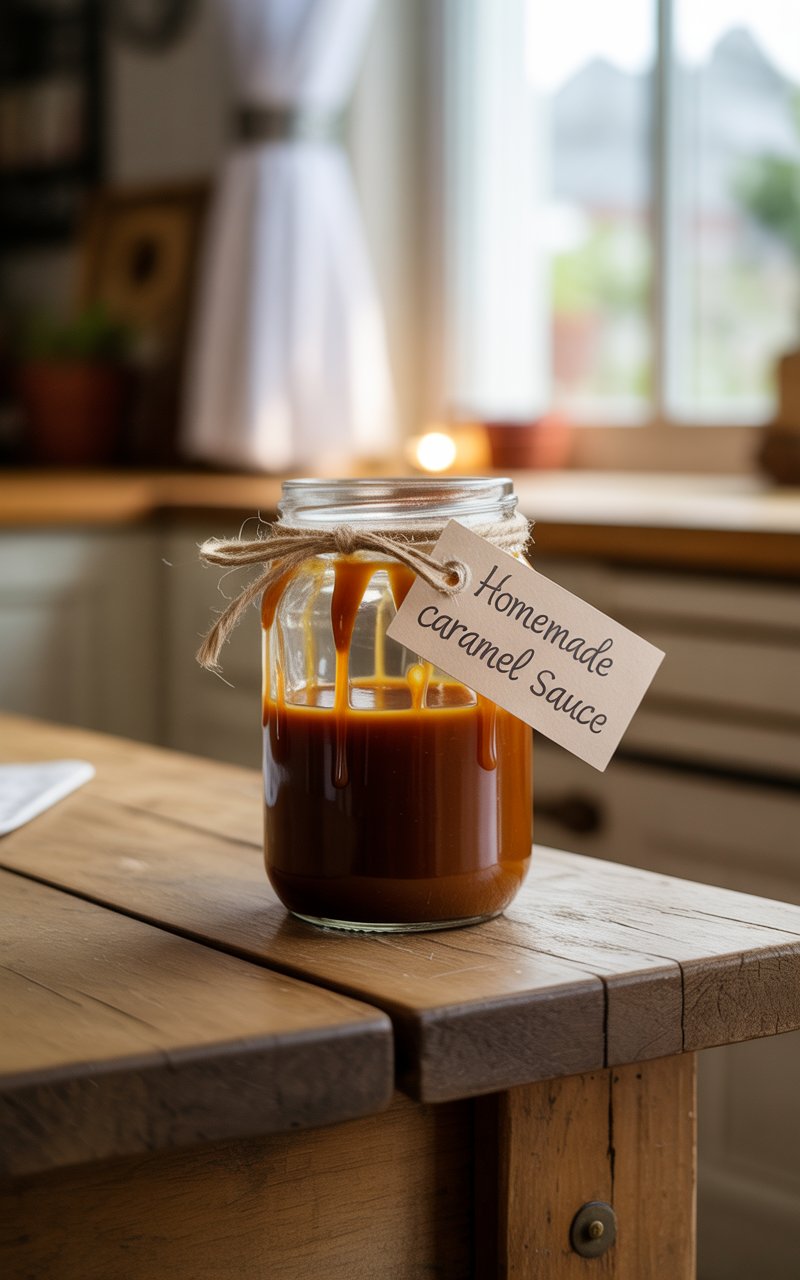
Ingredients You’ll Need
The beauty of homemade caramel sauce is its simplicity. Just a handful of ingredients create magic.
- Granulated sugar – The star of the show. White sugar works best for consistent results.
- Butter – Adds richness and smooth texture. Use unsalted for better control.
- Heavy cream – Balances sweetness and creates a luscious sauce.
- Salt (optional but recommended) – Enhances flavor; turn it into salted caramel for a trendy twist.
- Vanilla extract (optional) – Adds depth and aroma.
Essential Tools for Success
- Heavy-bottomed saucepan (to distribute heat evenly).
- Heat-resistant spatula or wooden spoon.
- Candy thermometer (optional, but great for beginners).
- Heatproof glass jar for storage.
Step-by-Step Recipe: Classic Homemade Caramel Sauce
Here’s a foolproof recipe to get you started.cheesy-beef-sausage-rigatoni
Ingredients (yields about 1 cup):
- 1 cup (200g) granulated sugar
- 6 tbsp (90g) unsalted butter, cut into cubes
- 1/2 cup (120ml) heavy cream
- 1 tsp vanilla extract (optional)
- 1/2 tsp sea salt (optional, for salted caramel)
Method:
- Melt the sugar – Place sugar in a heavy-bottomed saucepan over medium heat. Stir constantly with a heatproof spatula. The sugar will clump, then melt into a clear liquid, and finally turn golden brown.
- Add the butter – Carefully add the cubed butter once the sugar reaches a deep amber color. It will bubble vigorously—this is normal. Stir until the butter melts completely.
- Incorporate the cream – Slowly pour in the heavy cream while stirring. Again, expect bubbling. Continue stirring until smooth.
- Flavor and finish – Remove from heat. Stir in vanilla and salt (if using). Let it cool slightly before transferring to a jar.
Storage: Refrigerate in an airtight jar for up to 2 weeks. Warm gently before serving.
Variations to Try
One of the joys of making caramel sauce is experimenting. Here are a few ideas:
- Salted Caramel Sauce: Add flaky sea salt at the end for a sweet-savory twist.
- Spiced Caramel Sauce: Infuse with cinnamon, nutmeg, or cardamom for cozy autumn vibes.
- Coffee Caramel Sauce: Stir in a shot of espresso for a bold kick.
- Boozy Caramel Sauce: Add a splash of bourbon, rum, or Baileys once the sauce cools slightly.
- Vegan Caramel Sauce: Replace butter with coconut oil and cream with coconut cream for a dairy-free version.
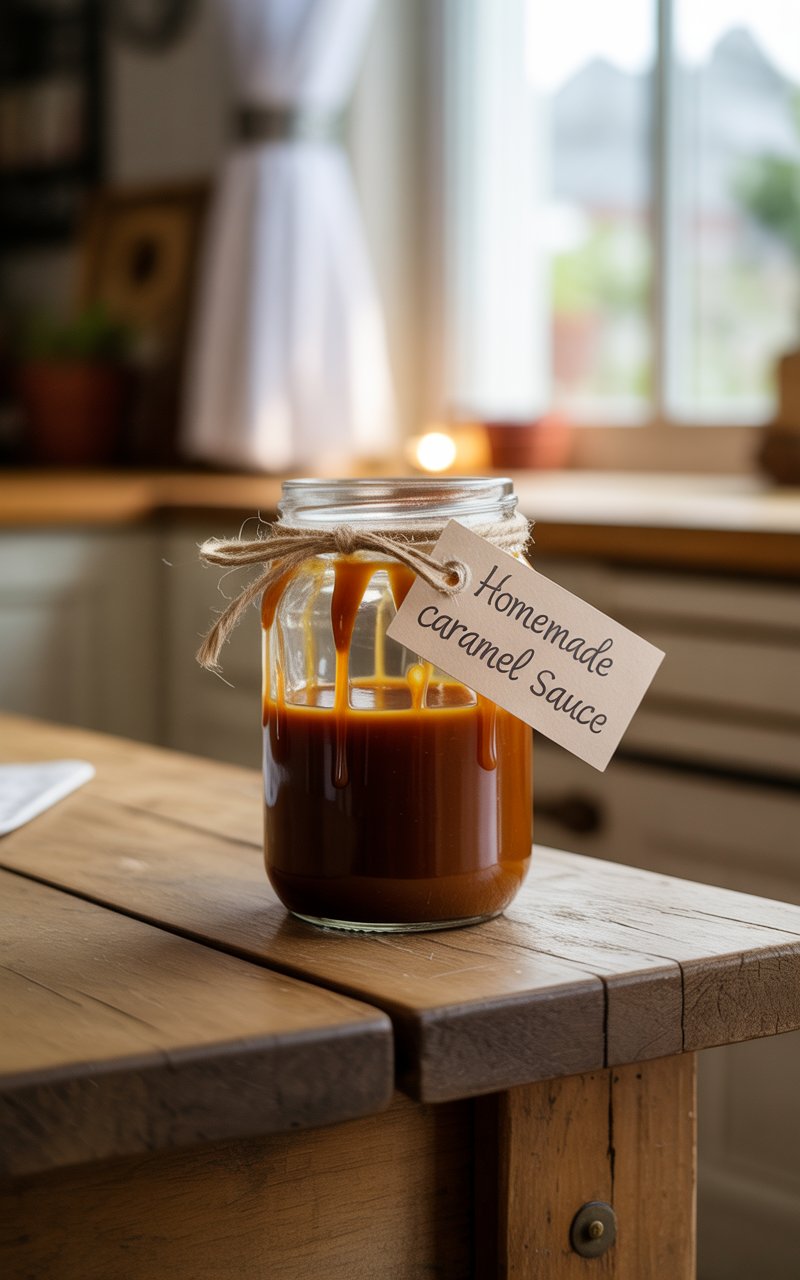
How to Use Homemade Caramel Sauce
The possibilities are endless!
- Desserts: Drizzle over ice cream, brownies, cakes, or cheesecake.
- Breakfast: Pour on pancakes, waffles, or oatmeal.
- Beverages: Stir into coffee, hot chocolate, or milkshakes.
- Snacks: Use as a dip for apple slices, pretzels, or popcorn.
- Savory Dishes: Try a touch of caramel sauce in glazes for pork, chicken, or roasted vegetables for depth of flavor.
Troubleshooting Common Caramel Mistakes
Even seasoned cooks face hiccups. Here’s how to fix them:
- Grainy texture – Sugar crystallized. Prevent by avoiding stirring once the sugar melts, or add a few drops of lemon juice to inhibit crystallization.
- Burnt caramel – Happens quickly once sugar turns amber. Remove from heat immediately when it reaches the desired color.
- Separated sauce – If the butter or cream separates, whisk vigorously or use an immersion blender to bring it back together.
- Too thick – Reheat gently with a splash of cream to loosen.
Healthier Approaches
While caramel sauce isn’t exactly a health food, you can make it slightly lighter:
- Use coconut sugar or honey for a different sweetness profile.
- Try almond milk or coconut cream for a dairy-free, lower-fat version.
- Practice portion control—caramel is meant to enhance, not overwhelm.
Pairing Ideas
- Salted caramel + dark chocolate → an unbeatable combo.
- Caramel + apples → classic fall treat.
- Caramel + coffee → rich café-style drinks at home.
- Caramel + sea salt → balances sweetness with savory depth.
Storage & Make-Ahead Tips
- Store in the fridge for up to 2 weeks.
- Freeze in small portions for up to 3 months. Thaw overnight in the fridge.
- Always warm gently before serving—microwave in short bursts or heat in a saucepan over low heat.
Fun Facts About Caramel
- Caramel has been around since the 17th century, originally made by boiling sugar in water.
- The word “caramel” comes from the Spanish caramelo.
- National Caramel Day is celebrated on April 5th in the United States.
Final Thoughts
Homemade caramel sauce is more than just a recipe—it’s a culinary skill that opens up a world of creativity. With a handful of ingredients and a little care, you can craft a sauce that transforms everyday dishes into indulgent experiences. Whether you’re drizzling it over desserts, swirling it into coffee, or gifting jars to friends, this golden sauce is bound to spread joy.
So the next time you’re tempted by that pricey jar at the store, remember: your kitchen holds the secret to something better—homemade caramel sauce made with love..pinterest.

